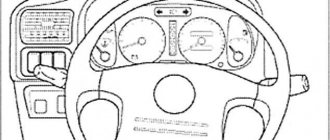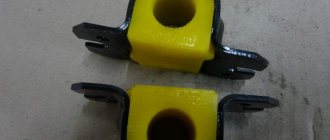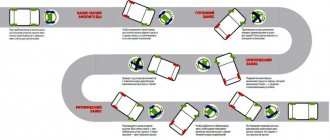Author: Horned Corpse Eaters
18 November 2021 18:41
Tags: auto current eliminate
4115
4
Many car drivers and passengers have encountered a strange and seemingly dangerous situation - they are electrocuted when they get out of the car. How does this happen? After the trip, they open the door or, accidentally touching the body, feel an unpleasant sensation. The body seems to be shaken, a burning sensation appears, and chills pass through the body.
0
Many car drivers and passengers have encountered a strange and seemingly dangerous situation - they are electrocuted when they get out of the car. How does this happen? After the trip, they open the door or, accidentally touching the body, feel an unpleasant sensation. The body seems to be shaken, a burning sensation appears, and chills pass through the body. Fortunately, the consequences of electrical exposure are not always tragic, but this does not make them any less unpleasant. Surely many have noticed that the car gives an electric shock exactly when you get out of it. This most often happens if the passenger or driver is wearing items made from synthetic fabric, or they are wearing new clothes. If you receive an unexpected electrical shock, the shock may be sufficient to cause you to drop the object in your hand. In addition, the consequences are aggravated if the victim has a low pain threshold or increased sensitivity to electric current.
Car and static electricity
0
Everyone knows the effect that can be observed when combing hair using a plastic comb; the hair then seems to “stand on end.” Or there is a slight cracking sound when removing synthetic clothing. And if you do this in complete darkness, you can even see small sparks-discharges. People inside the car can also suffer from the same effect. Why does the car give an electric shock? There are many reasons for this. Let's try to identify the most common ones: 1) In this situation, sometimes the indirect fault lies with the person himself. This is explained by the fact that while the car is moving, clothing (especially synthetic) rubs against the seat upholstery. In this case, the person himself accumulates static electricity. This often happens when synthetic fibers or natural wool were used to make clothing. Without even knowing it, when he gets out of the car, he touches the body or door, as a result of which a discharge occurs. Therefore, the answer to the question of why you get an electric shock when getting out of the car becomes obvious. Static electricity accumulated on clothing is to blame. 2) The vehicle itself accumulates a static charge. This can manifest itself in different ways. The car body receives an electric current because during the trip it comes into contact with the air, moving in space. Charge accumulates on it. Accumulation occurs throughout the entire movement. Dry weather also contributes to an increase in charge. It is clear that a person sitting inside a car also has electrical potential. The question is what exactly the charge means. If its charge is the same as that of the vehicle, no one will feel the electric shock. If it is plus/minus, a discharge will occur upon contact. 3) There is another reason why a car door gets electric. This is a technical fault. Its electrical wiring may be damaged due to certain circumstances. This can happen under the influence of abrasion or friction, or detachment from the fixing devices - and then they begin to rub against the body. At this point the wire insulation is destroyed. The exposed area is in contact with the metal of the body. The so-called "test to ground". The car begins to resemble a capacitor with a fairly strong capacitance. And when a passenger or driver gets out and touches the handle or door, they receive an electric shock.
0
Causes of stress on metal parts of a car
Complaints from drivers and passengers that the car is electrocuted are becoming more and more frequent. The situation is truly becoming uncontrollable. But automakers shouldn't be blamed for this. On the contrary, they are interested in increasing the safety of the driver/passengers. However, in most cases this phenomenon does not really pose a threat to human health, since it is associated with the occurrence of static electricity. But the unpleasant sensations experienced during a micro-electric shock are still painful and certainly do not bring pleasure to the subjects who receive them.
There is an opinion that the magnitude of the potential difference of static electricity can reach values of the order of hundreds of volts, and this is already a significant value. In reality, the voltage level is significantly lower, and the duration of the discharge is so short that such a blow simply does not have time to cause significant harm to the area of the body that felt it. Be that as it may, if electric shocks become frequent, this phenomenon can and should be resisted, and for this you need to figure out what sources of current on metal surfaces a modern car may have.
Electrostatic voltage
Electrostatics is well known to all of us from school physics lessons. In real life, we encounter this phenomenon quite rarely, and the car is exactly the place where, due to a number of objective reasons, this physical process manifests itself most often. Typically, the driver and passengers receive an electric shock when leaving the car, which is explained by the accumulation of electrostatic charge on the car body. An important factor contributing to the accumulation of static charge is low air humidity (at a humidity level of 85% or higher, the moisture contained in the air effectively absorbs free electrons).
Very often, the main cause of electrostatic stress is clothing, especially those containing a large percentage of synthetic materials or completely synthetic ones. In such cases, after long trips, electric shocks will be permanent, albeit random. The same can be said about the upholstery of the seats, interior and door panels. Those who like to dress up their car in covers should also check whether they are made of a material that contributes to the accumulation of static electricity.
It is possible that the reason why the car shocks when leaving it is that the body itself is susceptible to the accumulation of static charge. When driving in dry weather, the flow of oncoming air rolling onto the car contains a considerable amount of dust particles, which, as is known, are good batteries of charged ions. Upon contact with the body, these ions flow onto the metal, creating an electrostatic field, which, in turn, contacting a surface with an opposite charge, causes a discharge. Its strength will depend on how long the static energy has accumulated. If you get out of the car immediately after a long trip on a hot summer day, there is a high probability that the electric field of your hand will act as a discharge receiver.
However, this particular reason occurs infrequently, and some experts even argue that such a phenomenon is impossible, since the charge of dust particles is negligible, and when it hits the car body, the charge spreads over the entire surface, finding areas with the opposite charge, where the static is completely dissipated. A much more plausible version is the accumulation of static by your clothes made from synthetic fabrics. Contacting the seat upholstery, which in cars of the middle and budget price categories is also made from fabrics with a high percentage of synthetics, clothing becomes a natural receiver of static. And when the time comes to leave the car, we open the door, grab its outer metal part and feel a slight but unpleasant electric shock.
Let us note that in different people the electrical conductivity characteristics of the skin can vary within quite a wide range, so for some such a discharge will be practically imperceptible, while for others it may be quite painful. In most cases, changing clothes or upholstery material radically solves the problem of electrostatics, and if not, then the cause should be looked for elsewhere.
Breakdown of high-voltage wires
Unfortunately, such a phenomenon as explosive breakdown occurs quite often. One could even argue that for any car with a significant mileage, this is more the norm than a malfunction. The reason is not necessarily damage to the wiring - moisture, dust and dirt contribute to current leakage. And not only from spark plugs or ignition coils - a modern car is literally crammed with electronics. Chafing of wires, loosening of connectors, damage to the insulating layer - all these reasons lead to the fact that when you touch the car body, you will receive an electric shock. It is unlikely that you are such a zealous owner that you wash the wires and components of the car under the hood every day.
Harm and danger of the situation
Although at first glance it seems that a static discharge will not cause much harm, you should take a closer look at this problem. When the car body is shocked, a small discharge occurs. A clear example, however, of a different nature, is the piezo lighter. But if for some reason there are vapors of a flammable substance, such as gasoline, inside the car? This micro-lightning can ignite them, and the consequences of this can be very serious. Therefore, the question of what to do when the machine is electrocuted should be decided immediately. There is one more extremely important circumstance. While driving, the car driver constantly performs a number of functions. He controls the car, turns on/off various devices - direction indicators, windshield wiper blades, toggle switches for side lights, low beam, high beam. The driver constantly changes gears when the car has a manual gearbox. And if during this action a shock of static electricity occurs, it may suddenly lose control, which is fraught with dangerous consequences.
Possible consequences
The consequences of a light discharge of solar energy are of two types: safe and unsafe.
Safe ones include:
- Unpleasant sensations from “micro-electric shock”;
- Possible fear from the effect of surprise.
Unsafe ones include:
- For a person with a pacemaker, an electrical discharge of even low power passing through the body can cause failure of this device, which can lead to cardiac arrest and even death;
- Failure of the electrical equipment of the car - if a discharge jumps in the cabin or on the dashboard, then it is quite capable of causing damage to electronic sensors and devices inside the car, because a sharp surge in voltage can simply “burn” one of the elements of the electrical device;
- Ignition of fuel near the gas tank hatch. If a discharge spark occurs in this place, especially if the hatch is open, the consequences of such a micro-lightning strike can be sad, both for the car and for the owner.
How to cope with the “illness”
0
Let's figure out how to get rid of the cause of the current: The best thing to do in such a situation is to visit a service station. This is especially necessary when static discharges are felt very strongly. In the workshop, the car will undergo diagnostics, during which it will be determined whether its electrical equipment is in order. Detected faults will be corrected. Application of antistatic strips. You may have seen heavy fuel tankers on the road. What immediately catches your eye is the steel chain attached to the body, in contact with the asphalt. This is how grounding works with heavyweight fuel trucks. You can do something similar, only more elegant. It is not necessary to hang a chain, but anyone can install special antistatic agents. You should start upholstering the interior of the car, be it a model of the domestic auto industry or a foreign car. The most economical solution is to purchase covers. However, you should inquire in advance about their antistatic properties. And, of course, you should pay attention to the wardrobe. If possible, it is recommended to exclude from it things in which you most often feel a shock of static electricity. It is recommended to use special aerosols to humidify the air in the cabin. Firstly, the action of this substance removes the static charge inside the car, or can completely negate the effect of “static”. Secondly, more humid air has a beneficial effect on the well-being of passengers and the driver of the car. If all previous actions have not led to an improvement in the situation: the electrical circuits of the vehicle are in order, the style of clothing has been completely replaced, strips for neutralizing charge electricity and an aerosol are present, but from time to time a small click when interacting with the car makes you remember the laws of physics, there is one more thing means. The reminder of this direction of science is not accidental. You can learn how to exit the cabin correctly in accordance with the rules of physics. First, after opening the door, you need to touch the iron part of the car, and then stand on the ground.
Air flows
The reasons for the accumulation of static electricity charges on the body are different.
During movement, air currents flow around the vehicle body. Strong friction occurs and electrical charges are formed on the dielectrics. These are mainly plastic bumpers, headlights, radiator grille and other parts. Electric field strength occurs on tires and wheels while driving. The longer the trip, the stronger the resulting field. In dry and frosty weather, the charge is greatest and the potential difference sometimes reaches 1000 V.
Cars are on fire. Why did the Chinese get burned in Russia? More details
Troubleshooting errors
Below are tips that, if followed, are not only useless, but can also be detrimental to your health. We will explain why these judgments are incorrect:
- If there is no ground wire, turn the plug over in the socket. Changing the polarity will do nothing - the machine runs on AC power.
- Place a rubber mat on the concrete floor. Partially, as for walking near the washing machine, this will solve the problem. However, the accumulated potential on the body and metal objects will not disappear anywhere and is still capable of causing electrical injury.
- Disable the surge protector. This part supplies potential to the housing, but the amperage is so small that its effect is almost unnoticeable. In this case, tension is not capable of causing serious harm to a person.
In conclusion, it should be noted that you should not take lightly the fact that a washing machine in a house or apartment produces an electric current, albeit almost imperceptibly. It is imperative to solve the problem without postponing it. You can do this by calling a competent specialist or yourself, following the instructions given in this article.











